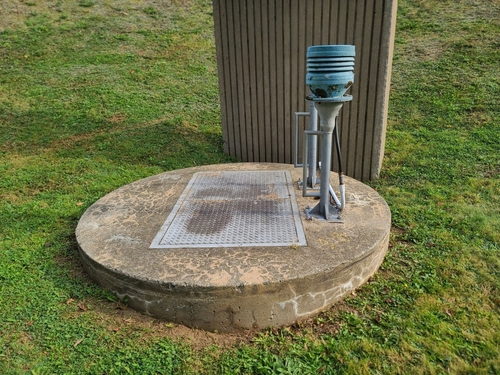How To Decide If I Need A Lift Station For My Septic system?

If you have a septic system on your property, you may be familiar with the concept of a gravity-fed system. Gravity-fed septic systems rely on the natural downward flow of wastewater from your home to the septic tank and eventually to the drain field. However, in some cases, the terrain of your property or the location of your home may not allow for a gravity-fed system to function effectively. This is where lift stations come into play. Lift stations are systems that pump wastewater from a lower elevation to a higher elevation, allowing for proper drainage and disposal. So, how do you decide if you need a lift station for your septic system?
Assessing Your Property
The first step in determining whether you need a lift station for your septic system is to assess the topography of your property. If your property has a significant slope or elevation changes, a gravity-fed system may not be sufficient to effectively transport wastewater from your home to the septic tank. In these cases, a lift station can be installed to pump the wastewater uphill to the septic tank or drain field.
Another factor to consider is the distance between your home and the septic tank. If your home is located far away from the septic tank and the natural slope of the land does not allow for proper drainage, a lift station may be necessary to ensure that wastewater is effectively transported to the septic tank.
Evaluating Your Septic System Needs
In addition to assessing the topography of your property, it’s also important to consider the capacity and requirements of your septic system. If your household produces a large volume of wastewater on a regular basis, a lift station may be needed to accommodate the higher flow rates and prevent backups or overflows.
Furthermore, if your septic system is located below the level of the drain field or if the drain field is situated at a higher elevation than the septic tank, a lift station may be necessary to pump the treated wastewater from the septic tank to the drain field for proper disposal.
Consulting with a Professional
If you’re unsure whether a lift station is necessary for your septic system, it’s recommended to consult with a septic system professional. A professional can assess the specific conditions of your property, evaluate the design and capacity of your septic system, and recommend the most suitable solution for your needs.
During a site visit, a septic system professional can inspect the layout of your property, the location of your home in relation to the septic tank and drain field, and the existing drainage patterns. Based on this assessment, they can provide expert advice on whether a lift station is needed to ensure the proper functioning of your septic system.
Installing a Lift Station
If it’s determined that a lift station is necessary for your septic system, the next step is to plan and install the system. Lift stations come in various sizes and configurations, depending on the specific requirements of your property and septic system.
The installation of a lift station typically involves excavating a pit or chamber where the pump will be located, connecting the pump to the existing plumbing system, and ensuring proper electrical connections for the pump to operate. The pump may be equipped with sensors and alarms to monitor the water level and alert you to any potential issues or malfunctions.
Maintaining Your Lift Station
Once the lift station is installed, it’s crucial to establish a regular maintenance routine to ensure the continued functionality of the system. Regular inspections, pump checks, and cleaning of the lift station are essential to prevent clogs, backups, and failures.
Additionally, it’s important to monitor the operation of the lift station and promptly address any signs of malfunction or failure. A malfunctioning lift station can lead to sewage backups, property damage, and potential health hazards, so it’s important to address any issues promptly and efficiently.
Summary
Deciding whether you need a lift station for your septic system requires careful assessment of your property’s topography, septic system needs, and consultation with a septic system professional. Lift stations can provide a solution for properties with challenging terrain or layout that prevent the effective functioning of a gravity-fed septic system.
If you’re considering installing a lift station, it’s important to work with a qualified professional to assess your specific needs, plan the installation, and establish a maintenance routine to ensure the continued functionality of the system. By taking the necessary steps to evaluate your property and septic system needs, you can determine whether a lift station is the right solution for your septic system.
Need Well-Drilling Contractors in Brooksville, FL?
Advanced Pump & Well Service is your leading well and pump specialists in the Tampa Bay are since 1956. With 24-hour emergency service, as well as regularly scheduled maintenance calls, Advanced Pump & Well Service is here for anything you could need. We specialize in many different areas; from jet pumps and submersible well service to water well tanks, pool pumps, and water filtration systems, we’re experts in it all. We service all makes and models of wells and pumps, so there is no issue that we cannot resolve. We are proud to provide reliable 24-hour service to central Florida, so do not hesitate to give us a call or visit us online.
Categorised in: Lift Stations
